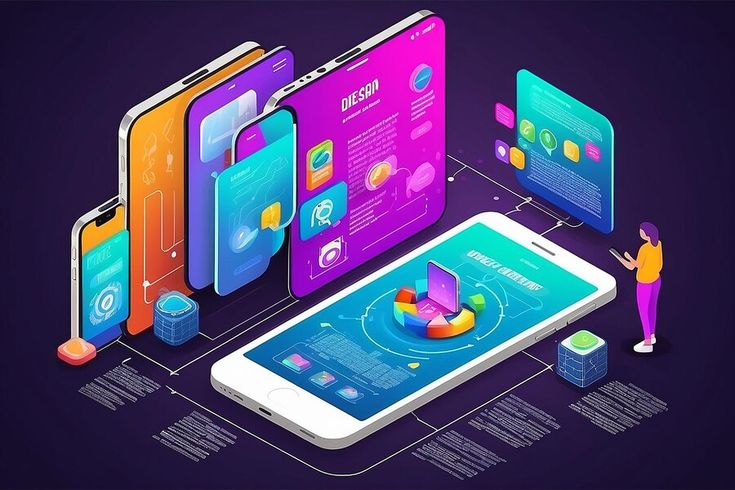Emulating Android Environments on Mac for Testing
Android Emulator for Mac is an indispensable tool for developers, testers, and QA engineers. They need to test mobile applications on different Android versions without depending heavily on real devices. These emulators create a real Android environment that operates on macOS. They provide an affordable, flexible, and scalable method for conducting functional, compatibility, and performance testing. Emulating Android on Mac software allows the use of Android emulators on Mac to reconcile iOS-based hardware and Android device environments.
Whether debugging UI layouts, emulating network conditions, or automating regression tests, it helps development teams streamline workflows and quickly iterate on releases. When combined with modern virtualization methods and Apple’s strong hardware (Intel or Apple Silicon), Android emulation on Mac provides both precision and efficiency, making it an essential component of any comprehensive mobile testing strategy.
This guide will help in understanding Android emulation and its various types on Mac. How does it work on Mac? the multiple challenges it faces, and how can testers optimize the emulator’s performance on Mac for testing?
Understanding Android Emulation
Android emulation is the process of creating a virtual Android device. This allows developers and testers to run an Android mobile app without having hardware hands-on. The Android OS, the CPU architecture, RAM, ROM, sensors, connection, and all hardware are emulated with the Android emulator through virtualization architectures.
This allows testing of all the variations of OS versions and device configurations on one machine. On macOS, the Android emulator can leverage Apple’s hardware abilities like GPU acceleration and fast CPUs to deliver realistic experiences. Android emulation allows to have widespread testing, faster iteration, and better stability before release by simulating several devices and environments.
Advantages of Android Emulation on macOS
Emulating Android Environments on macOS has become a viable option for developers, testers, and QA teams looking to consolidate workflows on a single workstation. The following are the main advantages:
- Robust application testing: Developers may deploy and assess applications across several Android iterations and hardware configurations without needing physical devices.
- Economic efficiency: Emulation eliminates the need to procure several hardware devices for software validation.
- Perfectly integrated into macOS: Because many emulators today have features like clipboard syncing, easy access to file sharing, and multi-device simulation, they are integrated seamlessly into the macOS environment for improved workflow.
- Faster debugging: By integrating with development environments, including Android Studio, the emulator allows for quick deployment, debugging, and looping on the code much faster, essentially live on the desktop.
- Scalable evaluation environment: Run many emulators concurrently to evaluate app functionality under a variety of device settings.
Popular Android Emulators for Mac
The selection criteria for an ideal emulator are defined by the testing requirements, performance, and compatibility needs. Here are the most common types of Android emulators for Mac, including their advantages and use cases:
LambdaTest
An Android emulator that is suitable for testing and ultimately saves time and cost will make the lives of testers easier and more resilient. Using a strong cloud-based testing platform such as LambdaTest is a valid choice to provision and run an Android emulator on a Mac rather than an ordinary local emulator.
LambdaTest is a cloud testing platform that allows developers to run manual and automated tests at scale on over 3000 real devices, browsers, and OS combinations. Testers can also test applications by emulating different mobile and browser scenarios with LambdaTest’s real-time testing features.
This approach allows macOS users to conduct mobile-friendly test sessions across multiple Android versions, screen sizes, and resolutions without compatibility issues. The platform offers the option for live interactive testing, automatic testing execution utilizing various automated testing frameworks such as Appium and Selenium, as well as advanced features such as network throttling, geolocation emulation, and responsive design tests.
With the growing need for Android automation, LambdaTest allows developers to run tests directly on Android devices and emulators from a Mac browser, ensuring cross-version compatibility without the hassle of local setups.
Genymotion
Genymotion is an online Android emulator for PCs designed specifically for developers, not for general use. It allows users to test apps on different emulated devices, each running different Android versions. This multipurpose Android emulator allows for faster testing of live app demos as well as measuring performance across multiple devices. This offers high-definition pixel compatibility, which allows the mobile app to be presented clearly across platforms.
Android studio
Android Studio is the standard Android developer terminal, often known as the integrated programming environment, or IDE. It includes a suite of tools to help developers make games and apps tailored to Android. It also turns out that you may test the game or app using an integrated emulator. Testers occasionally test out new Android versions using the emulator.
Droid4X
Droid4X, an app that can be used for computers, is an Android emulator. Droid4X is for the user who wants access to mobile games and apps easily and with no hassle.
Even if one is new to emulators, one may use it because of its easy-to-use interface, which is made to reduce the learning curve. Because Droid4X allows keyboard mapping, users can alter the controls to suit their requirements. On the majority of systems, its lightweight design guarantees seamless operation. It also has screen recording, which lets users record and share the application’s usage or games.
LDPlayer
One of the top Android emulators for Mac, Windows, and Linux, LDPlayer is a relatively new app that takes pride in its fast gaming optimization and performance. Keyboard mapping, high-frame-rate gaming, and gamepad support are some of its features.
The “multi-instance” function, which lets users concurrently run several games on the computer’s screen, is one of Testor’s favourite features. Likewise, an obvious noticeable improvement would be to the Android games themselves, and can improve the FPS and graphics so that these Android games are more effective because LDPlayer is converting from Android to Windows.
How Android Emulators Work on Mac
Android emulators for macOS function as virtualized systems that mimic the functionality of a real Android phone, allowing developers and testers to run and test applications without needing to use real Android devices. In practice, they function like:
- Virtual Machine Creation- The emulator creates a virtual Android device inside macOS using virtualization frameworks such as the Hypervisor framework or Intel HAXM.
- CPU architecture emulation- This converts Android’s ARM instructions into x86 (for Intel Macs) or runs natively on ARM64 (for Apple Silicon), making Android apps compatible.
- Operating system emulation- This type of emulation loads Android OS images (system images) that are versions for specific testing.
- Storage Emulation- In this emulation, it creates virtual storage spaces that replicate physical device memory and SD card emulation.
- Input handling- This sends keyboard, mouse, or trackpad input to the emulator that maps embodiment of interactive app experiences to touchscreen gestures.
- Testing integration- This type of testing integrates with IDEs, such as Android Studio, for real-time debugging, profiling, and automated test execution.
Challenges of Emulating Android Environments on Mac. Android emulation on macOS sacrifices some accuracy and performance of the testing due to its versatility and cost-effectiveness; it also has complications and performance issues, which can increase the variability of tests. These issues are often common limitations of the hardware itself, operating systems, or emulator-specific limitations. Building a practical and effective mobile testing methodology requires an understanding of them. They are as follows:
- Performance bottlenecks: High CPU and RAM usage can seriously affect both the emulator and the host Mac’s performance when running multiple instances or heavy apps.
- ARM translation delay: When running on Intel Macs, latency is added when ARM instructions are mapped to x86 instruction sets. On Apple Silicon, not all Android system images will be optimized for ARM64.
- Limited hardware simulation: Some sensors, such as the gyroscope and proximity sensor, are only partially simulated or completely absent. This limits testing scenarios for specific applications.
- GPU rendering restrictions: Even with GPU acceleration, graphics performance might not entirely align with real devices, impacting gaming or 3D application testing.
- Compatibility problems: Some Android OS versions or custom ROMs might not function efficiently on macOS-based emulators.
- Thermal throttling: Extended use of the emulator may lead to Mac hardware heating, which decreases performance as time passes.
- Integration Issues: Some shortcuts or SDKs may operate differently on emulators than on physical devices, and this could result in either false positives or false negatives.
Optimizing Android Emulator Performance on Mac for Testing
When running Android emulators on macOS, resources are often consumed, especially for apps that use a lot of testing and graphics. Optimizing performance will help reduce testing cycle times and effort, improve workflow, and reduce the overhead on the host machine. Here are some successful optimization techniques:
Enable hardware acceleration- Make use of the Hypervisor. Framework on Apple Silicon computers or Intel HAXM on Intel Macs to improve performance and responsiveness when utilizing CPU virtualization.
Allocate resources properly– Higher emulator RAM and CPU cores in the emulator settings will promote less slowdown, and also be sure not to overallocate system resources and crash macOS or the emulator.
Leverage GPU rendering- For UI-heavy apps, turn on Metal or OpenGL rendering to relieve the CPU of graphics processing and increase frame rates.
Use x86/ARM64 images- Match system images to the Mac’s architecture to reduce translation overhead and improve execution speed.
Limit background processes- Close any open macOS apps to increase the emulator’s CPU, RAM, and I/O bandwidth.
Optimize disk I/O- For speedier written instruction and boot times, store emulator images on SSDs.
Control resolution and density- Reduce emulator screen resolution and DPI to lower rendering load without impacting test validity.
Use snapshots instead of a cold boot- Load saved emulator states for faster startup during repetitive testing cycles.
Simulate networks efficiently- Use lightweight network profiles when testing to minimize resource usage from complex bandwidth simulations.
Run headless mode for automation- In CI pipelines, use emulators without a GUI to save processing power and improve execution speed.
Future of Android Emulation on Mac for Testing
Apple Silicon’s ongoing optimization is expected to help Android emulation on macOS in the future by providing testing workflows with quicker and more energy-efficient performance. Improved ARM64 support will lower latency and compatibility problems by bringing emulator speeds closer to native levels.
Scalability will be further improved by cloud-integrated solutions, which will allow for easy access to virtual Android environments free from local resource limitations. Mac-based Android testing will become more precise, effective, and flexible to meet changing mobile development requirements thanks to developments in AI-driven testing automation and improved hardware emulation.
Conclusion
In conclusion, it provides flexibility, cost savings, and scalability in mobile app validation, simulating Android environments on Mac has emerged as a crucial tactic for developers and testers. Despite obstacles such as limited hardware simulation and performance overhead, dependable outcomes are guaranteed by optimal configurations and cloud-based alternatives.
Tests are getting faster and more effective thanks to the strength of macOS hardware, particularly Apple Silicon, and developing emulation technologies. Mac users may now confidently include Android emulation into workflows as tools advance, guaranteeing stable, superior cross-platform applications.



